Nobody likes vegetables – unless it’s potatoes!
But even those can get boring after a while. There’s only so much potatoes one can eat without feeling sick. Culinary enthusiasts and mom chefs have to keep finding unique vegetables and newer ways of cooking them in order to feed their loved ones and keep them healthy. After all, no one can deny the health benefits of eating fresh vegetables and fruits.
We all know how good veggies are for the body. Not only do they contain vital micronutrients required for optimal body functions, but they are also rich in antioxidants that strengthen your immune system. Plus, veggies are high in fiber which feeds our gut microbiome and improves digestive health. Truly, they’re a wonderful gift from Nature!
But how do you find the best vegetables when your local supermarket is stacked with the same plain ol’ boring stuff? Don’t worry! In this article, we highlight some weird vegetables for you that you’ve never heard of! These strange looking vegetables might even pass off as weeds or roots, but trust us, they are super yummy, delicious, and juicy when cooked right!
Since these veggies are exotic, not only do they have strange shapes and colors but also contain unique components that fulfill important nutrient deficiencies in our body. All in all, you must try these strange vegetables at least once in your lifetime! So, embark on a crazy culinary adventure with these top 15 weird vegetables previously unknown to you!
1. Bitter Melon:
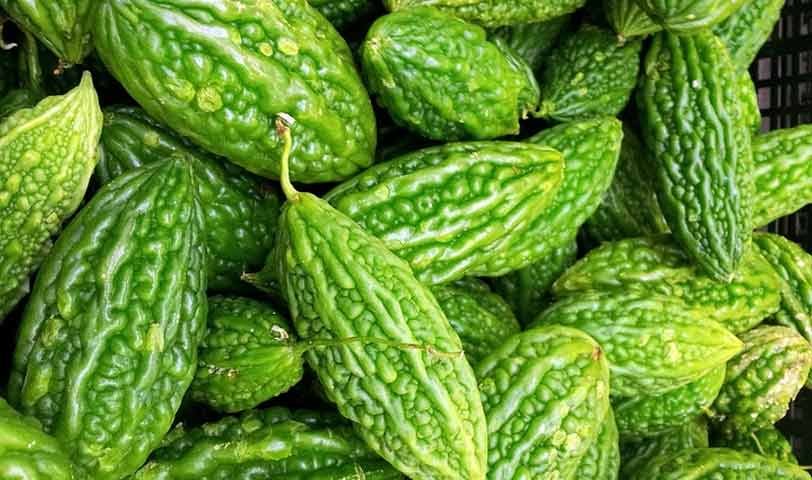
Bitter melon is a type of melon that is native to India and is used in many traditional dishes. It has a distinctively bitter taste and is often used as a unique vegetable in curries and stir-fries. Bitter melon is also known for its medicinal properties, as it is believed to help with digestion, regulate blood sugar, and aid in weight loss. It is also a good source of vitamins A and C, as well as minerals like potassium, magnesium, and iron.
1. Supports Blood Sugar Balance
2. Supports Healthy Weight Loss
3. Boosts Immune System
4. Improves Digestive Health
5. Rich in Antioxidants
Bitter melon is known to have a range of skin benefits, including helping to slow down the signs of aging, reduce inflammation, and treat skin conditions like eczema and psoriasis. Its high levels of antioxidants, vitamins, and minerals help fight free radicals, which can damage skin cells and contribute to premature aging.
Bitter melon also has anti-inflammatory properties, which can reduce redness and irritation associated with eczema and psoriasis. Additionally, its antioxidant content can help to protect the skin from environmental damage like sun exposure and pollution. Moreover, consuming bitter melon tea can further amplify these benefits.
2. Oca:

(Oxalis tuberosa) is a root vegetable native to the Andes but grown in many other parts of the world? It is also known by its common names of New Zealand yam or mountain yam. Oca is a small, colorful tuber with a slightly acidic flavor. It can be eaten raw or cooked like potatoes, boiled, fried, or mashed.
Oca is a good source of vitamin C and dietary fiber. It can be used in a variety of dishes, including soups, salads, casseroles, side dishes, and even desserts. It is also a great addition to any meal as an alternative to potatoes, sweet potatoes, or yams.
It is a rich source of dietary fiber, vitamins, and minerals, including vitamin C, calcium, iron, magnesium, phosphorus, and potassium. Oca is also a source of antioxidants, which can help protect against cell damage and reduce inflammation.
Oca can be boiled, baked, mashed, added to soups and stews, or fried. It can also be eaten raw or pickled. Eating oca can help improve dental health by strengthening the enamel of the teeth and preventing cavities. It can also help reduce the risk of gum disease, as it helps to keep the gums healthy and free of bacteria.
Also Read: All About Oca Vegetable: Benefits, Recipes, & Harvesting
3. Kohlrabi:
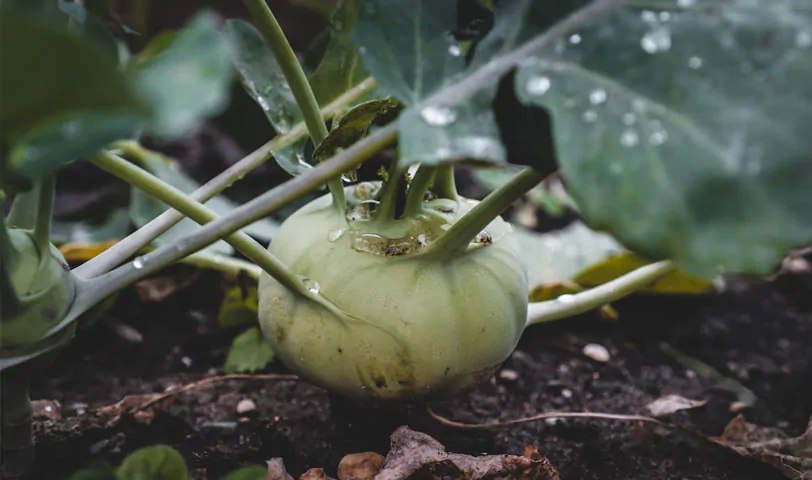
This is a type of vegetable that is a member of the brassica family, which includes cabbage, broccoli, and kale. It is a round, bulb-like vegetable that grows above ground and has a mild, sweet flavor. The kohlrabi leaves are also edible and can be cooked like spinach or added to salads.
How can Kohlrabi be used in a diet? Kohlrabi is a great addition to any diet as it is low in calories, and high in fiber, vitamins, and minerals. It is a versatile vegetable that can be added to salads, soups, stir-fries, and roasts. For a healthy snack, try adding kohlrabi to raw vegetable sticks and dip.
4. Chayote:
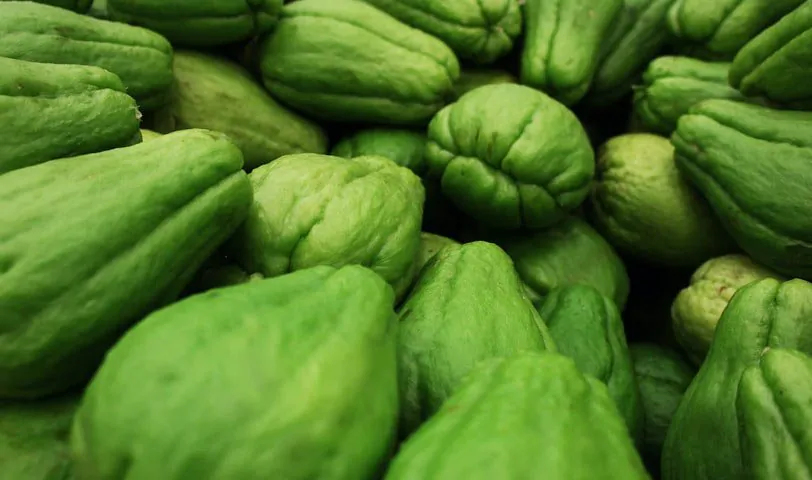
Chayote is a type of edible squash that belongs to the gourd family. It is native to Central America and the Caribbean and is popular in Mexican cuisine. It has a mild, slightly sweet taste and a crisp texture when raw, and a tender texture when cooked.
It can be eaten raw, cooked, or pickled and is often used in soups, stews, salads, and side dishes. It can also be stuffed with cheese or other ingredients and baked.
It is popular in Latin American and Caribbean cuisine.
5. Dandelion Greens:
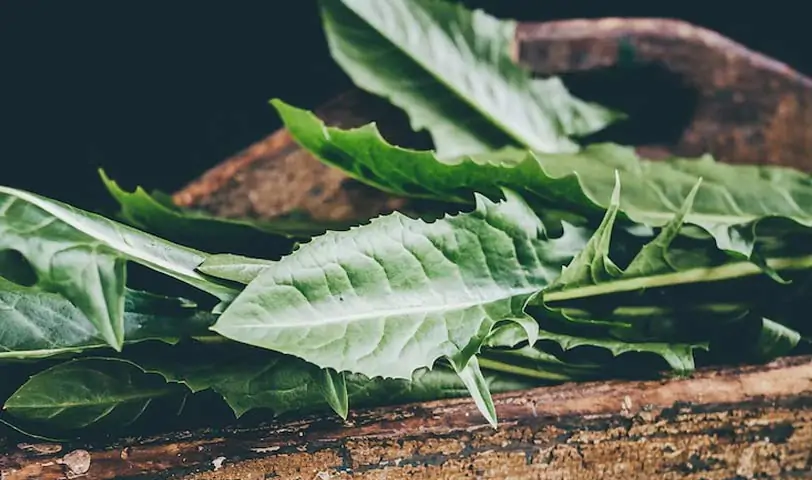
Dandelion greens are a type of bitter green leafy vegetable. They have a slightly bitter and tangy taste and are often used in salads or cooked dishes. They have a slightly bitter flavor, similar to that of arugula. So while they may be considered “strange vegetables” to some, they are perfectly normal vegetables.
They are high in vitamin A, vitamin C, iron, calcium, and other essential nutrients. Dandelion greens are often eaten raw in salads or sautéed with garlic and olive oil. They can also be used to make a variety of soups, stews, and casseroles.
6. Celeriac:

Celeriac, also known as celery root, is a root vegetable grown for its edible root. It is a variety of celery grown for its thick, white, knobby root, which has a mild, sweet, and nutty flavor. It is typically used in soups, stews, casseroles, salads, and even mashed. It can also be roasted, sautéed, or pureed.
7. Salsify:
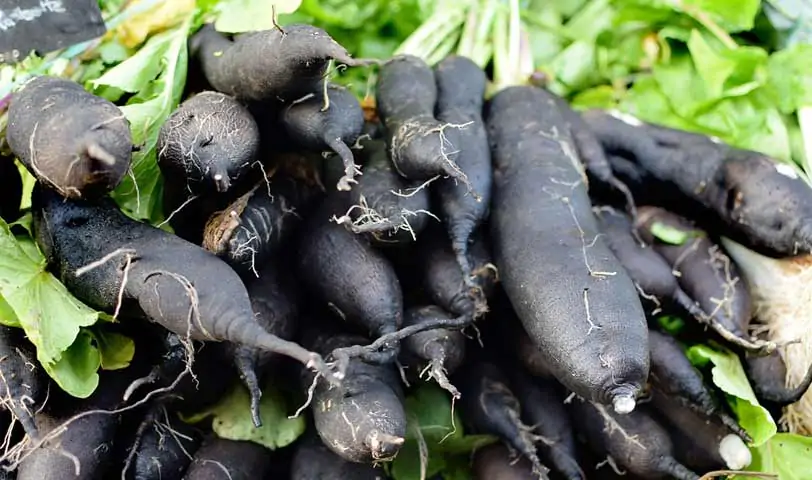
Salsify, also known as vegetable oyster or Spanish salsify, is a root rarest vegetable in the world. Vegetables have been grown since the time of the ancient Greeks. The vegetable is composed of a long, slender, white root that is similar to a parsnip. It can be cooked in a variety of ways, including boiled, steamed, roasted, or sautéed. It is often served as a side dish, but can also be used in soups and stews.
8. Chinese Broccoli:
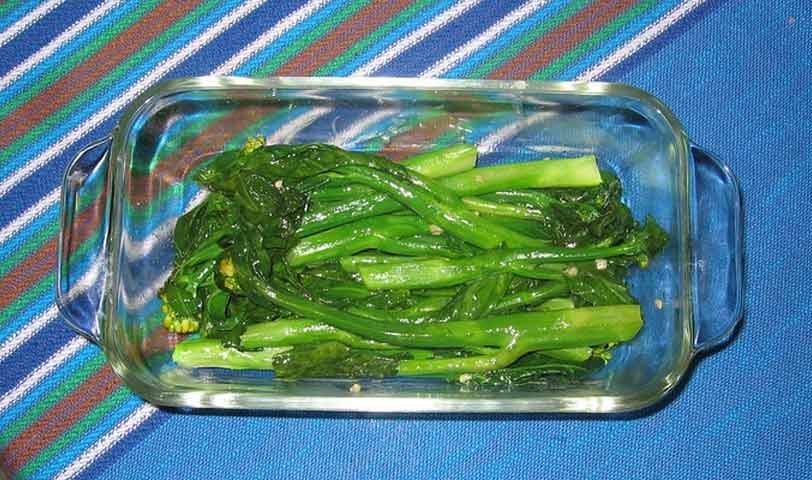
Chinese Broccoli is a type of leafy green vegetable that is part of the cruciferous family. It is closely related to broccoli, but with a slightly sweeter taste and smaller florets. The leaves and stems are edible and can be cooked in stir-fries, steamed, or boiled. Chinese Broccoli is a great source of vitamins, minerals, and dietary fiber.
It also contains antioxidants which can help reduce inflammation and protect against certain diseases like cancer.
- Rich in Nutrients: Chinese broccoli is an excellent source of vitamins, minerals, and antioxidants. It is high in vitamin A, vitamin C, and folate, and is a good source of dietary fiber and iron
- Supports Digestive Health
- May Help Lower Blood Pressure
- May Reduce Inflammation
- May Help Improve Bone Health
9. Romanesco:

Romanesco is a type of broccoli with a nutty and slightly sweet flavor. Its appearance is like a cross between cauliflower and broccoli, with a bright green color and a unique cone-shaped head. Romanesco is an excellent source of vitamin C and fiber, making it a nutritious and delicious side dish or addition to salads. The size of Romanesco can vary, but typically it has a head size of around 4-6 inches in diameter.
10. Skirret:
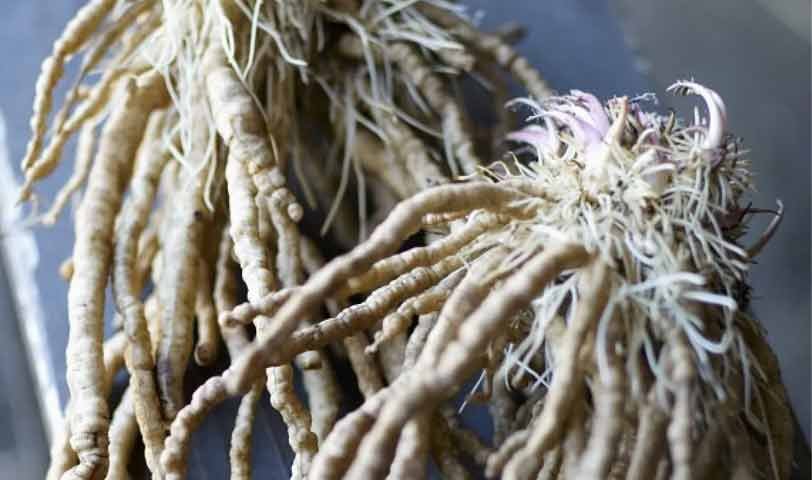
Skirret is a root vegetable that is native to Northern Europe and is found in many parts of the UK. It is a member of the parsnip family and has a sweet, nutty flavor. Skirret has white flesh and is usually eaten boiled or roasted. It is also sometimes mashed or used in soups and stews.
The root itself is long and thin with a rougher, brown outer skin. Skirret is a good source of fiber, vitamins, and minerals. It is low in calories and fat and can be a great addition to any diet.
11. Cardoon

You might be amazed to know that this aesthetically pleasing plant is actually a vegetable that you can cook and eat. Its history dates back to the ancient times of Rome. The spiny stalks are edible and have a distinctive earthy and nutty taste. People use it in various dishes in different parts of the world. You can pair them with meat, or like in Morocco, these are great options to add in tagines. Italians add them to soups, pasta, and risotto.
Since it needs a spacious area, well-drained soil, and excessive sunshine to grow, so it might be a bit challenging to grow it in your home garden.
12. Sea Kale:
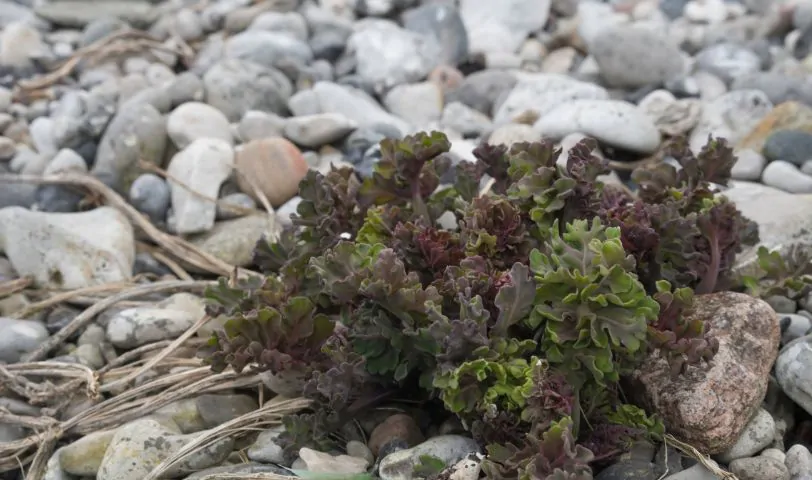
Another weird one on the list is Sea kale, which has crinkled leaves with a blue-green color. The young shoots and leaves of sea kale are the edible parts of the plant. They are harvested in the spring when they are still tender. Moreover, it is packed with calcium, magnesium, and vitamin B6.
People use it in regular cuisines as well. You can slice the stems and blanch them in boiling water. Then stir fry and season with balsamic vinegar. Another way is to cook the leafy parts with garlic, soy, and chili.
13. Daikon Radish

Physically similar to a carrot, it is a white-colored vegetable that is also called Japanese radish or Chinese radish. It is a root that is commonly named mooli in South Asia. Since its texture is crunchy with a mild spicy taste, it is widely used in salads. You can stir-fry, add them to sandwiches, use their green parts as garnishes, or pickle the vegetables with carrots.
It is packed with antioxidants, folate, and vitamin C, which promotes the immune system and red blood cell production. Its juice repairs damaged body tissues and helps boost cardiovascular health. It is also loaded with calcium, so people with osteoporosis should include it in their daily meal plans. Moreover, it helps in weight loss as its fiber content makes you feel full for long hours.
There are tons of ways to eat daikon. You can boil, roast, make soup, simmer with chicken, or slice them for salads. Want something more unique? Make french fries out of daikon.
14. Shiso
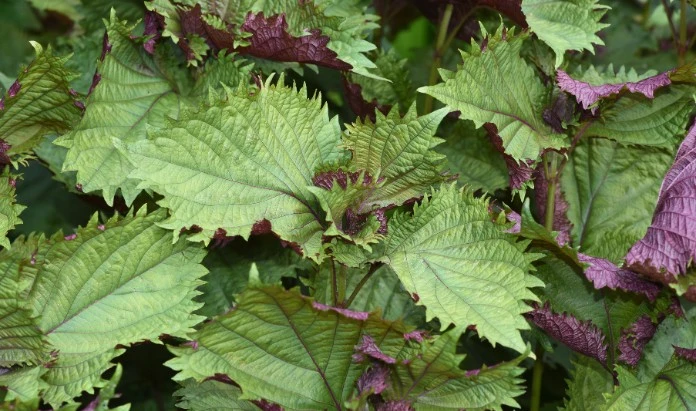
What might appear as generic leaves of some kind is the nutrition-packed vegetable that many people consume. Shiso (Chinese basil) is an aromatic herb used mainly in Japanese meals and looks aesthetic as well. These edible leaves are not just added as a garnish to salads, but they are also used to make drinks. In terms of flavor profile, they have hints of cinnamon, cloves, and mint, along with a citrusy taste.
Its leaves have medicinal properties as well. It is used in Chinese medicine to treat asthma, colds, and flu. Particularly, it contains Potassium, Iron, Calcium, Vitamin C, and E and helps fight allergies, respiratory problems, and cancer.
To enjoy Shiso leaves in their great taste, you can make juice, pickle, or kimchi and marinate it to serve with white rice. Or simply toss them into salads with dressing or cook them with spinach.
15. Sunchoke

Jerusalem artichoke is a knobby, root vegetable native to North America. Despite its name, it is not related to artichokes but belongs to the sunflower family. This vegetable has a nutty, mildly sweet flavor and is packed with nutrients.
It is an excellent source of inulin, a prebiotic fiber that promotes gut health by supporting beneficial bacteria. Additionally, it provides potassium, iron, and vitamin C, which help boost energy and strengthen the immune system.
This unique vegetable can be roasted, mashed, turned into soups, or eaten raw in salads. Its slightly sweet flavor pairs wonderfully with fresh herbs like rosemary and thyme, making it a delicious addition to any meal.
Conclusion
Exploring unusual vegetables can introduce exciting flavors and nutritional benefits to one’s diet. These unique vegetables, such as bitter melon, oca, kohlrabi, chayote, dandelion greens, celeriac, salsify, Chinese broccoli, romanesco, and skirret, offer a range of tastes, textures, and health-promoting properties.
By incorporating these lesser-known vegetables into culinary creations, individuals can embrace a diverse and fulfilling eating experience while reaping the numerous advantages of consuming fresh and vibrant produce.


